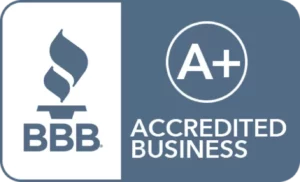IRA Prohibited Transaction Rules in Further Detail
The Internal Revenue Code (IRC) doesn’t describe what a Self-Directed IRA can invest in. However, it describes what that IRA cannot invest in. Internal Revenue Code Sections 408 & 4975 prohibit Disqualified Persons from engaging in certain transactions. The purpose of these rules is quite simple: they encourages IRA holders to use IRAs for the accumulation of retirement savings. Additionally, it prohibits individuals in control of IRAs from taking advantage of the tax benefits for their account.
The IRA-prohibited transaction rules ensure that related parties handle their IRA in a way that benefits the retirement account. In other words, not specifically the IRA owner. As a result, the rules prohibit transactions between the IRA and people who are “disqualified persons”. The outline for these rules can be found in Internal Revenue Code Section 4975.
Who is a “Disqualified Person?”
The IRS restricts certain transactions between the IRA and a “disqualified person”. The rationale behind these rules was a congressional assumption that certain transactions between certain parties are inherently suspicious. As a result, these transactions should not be allowable.
The definition of a “disqualified person” has a variety of party scenarios. However, disqualified persons typically fall under the following categories:
- The IRA holder
- Ancestors or lineal descendants of the IRA holder
- Entities in which the IRA holder holds a controlling equity or management interest
To be more elaborate in the definition of a “disqualified person,” below is a list under Code Section 4975.
Disqualified Persons
- Fiduciary (IRA holder, participant, or person with authority over IRA investments).
- A person providing services to the plan (Trustee or custodian).
- An employer, any of whose employees the plan covers (generally not applicable to IRAs).
- An employee organization any of whose members the plan covers (generally not applicable to IRAs).
- A 50 percent owner of 3 or 4 above.
- Family member of 1, 2, 3, or 4 above. Family members include:
- Fiduciary’s spouse
- Parents
- Grandparents
- Children
- Grandchildren
- Spouses of the fiduciary’s children and grandchildren (not parents-in-law).
- An entity (corporation, partnership, Trust, or estate) that is owned or controlled more than 50 percent by 1, 2, 3, 4, or 5. The indirect stockholdings/interest is taken into account to determine if an entity is a disqualified person.
- A 10 percent owner, officer, director, or highly compensated employee of 3, 4, 5, or 7.
- A 10 percent or more partner or joint venture of a person described in 3, 4, 5, or 7.
The following are NOT disqualified persons:
- Sisters
- Aunts and uncles
- Cousins
- Step-brothers and step-sisters
- Friends
Application of the IRA Prohibited Transaction Rules
In light of prohibited transaction rules, it’s wise to examine all parties you engage within a transaction. This helps determine whether the transaction is prohibited and violates IRC 4975.
According to Internal Revenue Code Section 4975, a Self-Directed IRA is prohibited from engaging in certain types of transactions. You can better understand the types of prohibited transactions by dividing them into three categories:
- Direct Transactions
- Self-Dealing transactions
- Conflict of Interest Transactions
Direct IRA Prohibited Transactions
The “Direct IRA Prohibited Transaction” generally involves one of the following, subject to the exemptions under Internal Revenue Code Section 4975(d):
Direct or indirect Sale, exchange, or leasing of property between an IRA and a “disqualified person”:
First Example:
Jack sells an interest in a piece of property his IRA owns to his son.
Second Example:
Judy leases real estate her IRA owns to her father.
Third Example:
Brian uses his IRA funds to purchase an LLC interest his son owns.
A direct or indirect lending of money or other extension of credit between an IRA and a “disqualified person”:
First Example:
Keith lends his wife $10,000 from his IRA.
Second Example:
Amy personally guarantees a bank loan to her IRA.
Third Example:
Peter uses IRA funds to lend an entity owned and controlled by his mother $60,000.
Direct or indirect furnishing of goods, services, or facilities between an IRA and a “disqualified person”:
First Example:
Eric buys a piece of property with his IRA funds and hires his father to work on the property.
Second Example:
Marilyn buys a home with her IRA funds and personally fixes it up.
Third Example:
Sara owns an apartment building with her IRA and hires her father to manage the property.
Indirect IRA Prohibited Transactions
Direct or indirect transfer to a “disqualified person” of income or assets of an IRA:
First Example:
Dan is in a financial jam and takes $12,000 from his IRA to pay his mortgage and credit card bill.
Second Example:
Steve uses his IRA to purchase a rental property and hires his friend to manage the property. The friend then enters into a contract with Steve and transfers those funds back to Steve.
Third Example:
Victoria invests her IRA funds in a real estate fund and then receives a salary for managing the fund.
Self-Dealing IRA Prohibited Transactions
A “Self-Dealing IRA Prohibited Transaction” is subject to IRC 4975(d) and generally involves one of the following:
The direct or indirect act by a “Disqualified Person” who is a fiduciary dealing with income or assets of the IRA to benefit himself or his account.
First Example:
Jessica who is a real estate agent uses her IRA funds to buy a home and earns a commission from the sale.
Second Example:
James wants to buy a piece of property for $110,000. He wants to own the property personally but doesn’t have sufficient funds. As a result, James uses $90,000 from his IRA and $20,000 personally to make the investment.
Third Example:
Dana uses her IRA to funds to invest in a real estate fund that her son manages. Dana’s son receives a bonus for securing Dana’s investment.
Conflict of Interest IRA Prohibited Transactions
A “Conflict of Interest IRA Prohibited Transaction” is subject to IRC section 4975(d) and generally involves one of the following:
Receipt of consideration by a “Disqualified Person” who is a fiduciary for his/her own account from any party dealing with the IRA. This is in connection with a transaction involving income or assets of the IRA.
First Example:
Joe uses his IRA funds to loan money to a company in which he manages and controls but owns a small ownership interest in.
Second Example:
Michelle uses her IRA to lend money to a business that she works for in order to secure a promotion.
Third Example:
Brandon uses his IRA funds to invest in a hedge fund that he manages and where his management fee is based on the total value of the fund’s assets.
Statutory Exemptions
Under IRC Section 4975(d), Congress created certain statutory exemptions from the IRA prohibited transaction rules outlined under Internal Revenue Code Section 4975(c). For these transactions, Congress believes there is a legitimate reason to permit them. Therefore, Congress has issued a blanket statutory exemption permitting these transactions. However, Congress specifies certain requirements that must be satisfied.
Below is a list of some of the statutory exemptions found in IRC Section 4975(d) that apply to IRAs:
- Any contract with a disqualified person for office space, legal, accounting or other services necessary for the operation of the IRA. However, reasonable compensation must be paid. This exemption does not apply to an IRA fiduciary (the IRA holder).
- The provision of ancillary services to an IRA by a bank Trustee.
- Receipt by a disqualified person of any benefit to which he may be entitled as a participant or beneficiary in the plan. The benefit must be determined and paid on a basis consistent with the terms of the plan as applied to all other participants and beneficiaries.
Life Insurance and Certain Collectibles
In general, a Self-Directed IRA LLC cannot Invest in life insurance contracts or collectibles below:
- Works of art
- Metals or gems
- Alcoholic beverages
- Rugs or antiques
- Stamps
- Most coins
Types of Collectibles that an IRA holder Can Purchase Using IRA Funds
- One, one-half, one-quarter or one-tenth ounce U.S. gold coins. American Gold Eagle coins are the only gold coins IRAs can invest in. Other gold coins, to be eligible as IRA investments, must be at least .995 fine (99.5% pure).
- One ounce silver coins minted by the Treasury Department.
- Any coin the laws of any state issues.
- A platinum coin described in 31 USCS 5112(k).
- Gold, silver, platinum or palladium bullion, except bullion that is made into a coin. These collectibles must be of a certain fineness that is in the physical possession of a Trustee. Additions, it has to meet the requirements for IRA Trustees under Code Sec. 408(a).
Determining Whether a Specific Transaction is an IRA Prohibited Transaction
Through an arrangement between the IRS and the Department of Labor (DOL), it is the DOL’s responsibility to determine whether a specific transaction is an IRA prohibited transaction. Also, they’re responsible for issuing prohibited transaction exemptions.
When the IRS discovers what appears to be a prohibited transaction in an IRA, it turns the matter over to the DOL. Then the DOL reviews the situation and responds to the IRS, which in turn responds to the taxpayer.
If the IRA grantor wants to apply for a prohibited transaction exemption, he or she must apply to the DOL. The DOL has the authority to issue prohibited transaction exemptions. Although some, known as “prohibited transaction class exemptions” (PTCEs), are available for anyone’s reliance. Others, the individual prohibited transaction exemptions (PTEs), are issued only to the applicant.
Penalties for Engaging in an IRA Prohibited Transaction
Oftentimes, the penalty starts out at 15% for most retirement plans. However, the penalty is harsher for Self-Directed IRAs.
For example, if the IRA holder, owner or beneficiary engages in a transaction that violates the prohibited transaction rules, the IRA loses its tax exempt status. The entire fair market value of the IRA is then treated as taxable distribution. Now, it’s subject to ordinary income tax. Additionally, the IRA holder or beneficiary is subject to a 15% penalty. They will be subject to a 10% early distribution penalty if under the age of 59 1/2.
Because of the penalties involving IRA Prohibited Transaction rules, consult with a tax attorney or tax professional before using a Self-Directed IRA to make investments.











